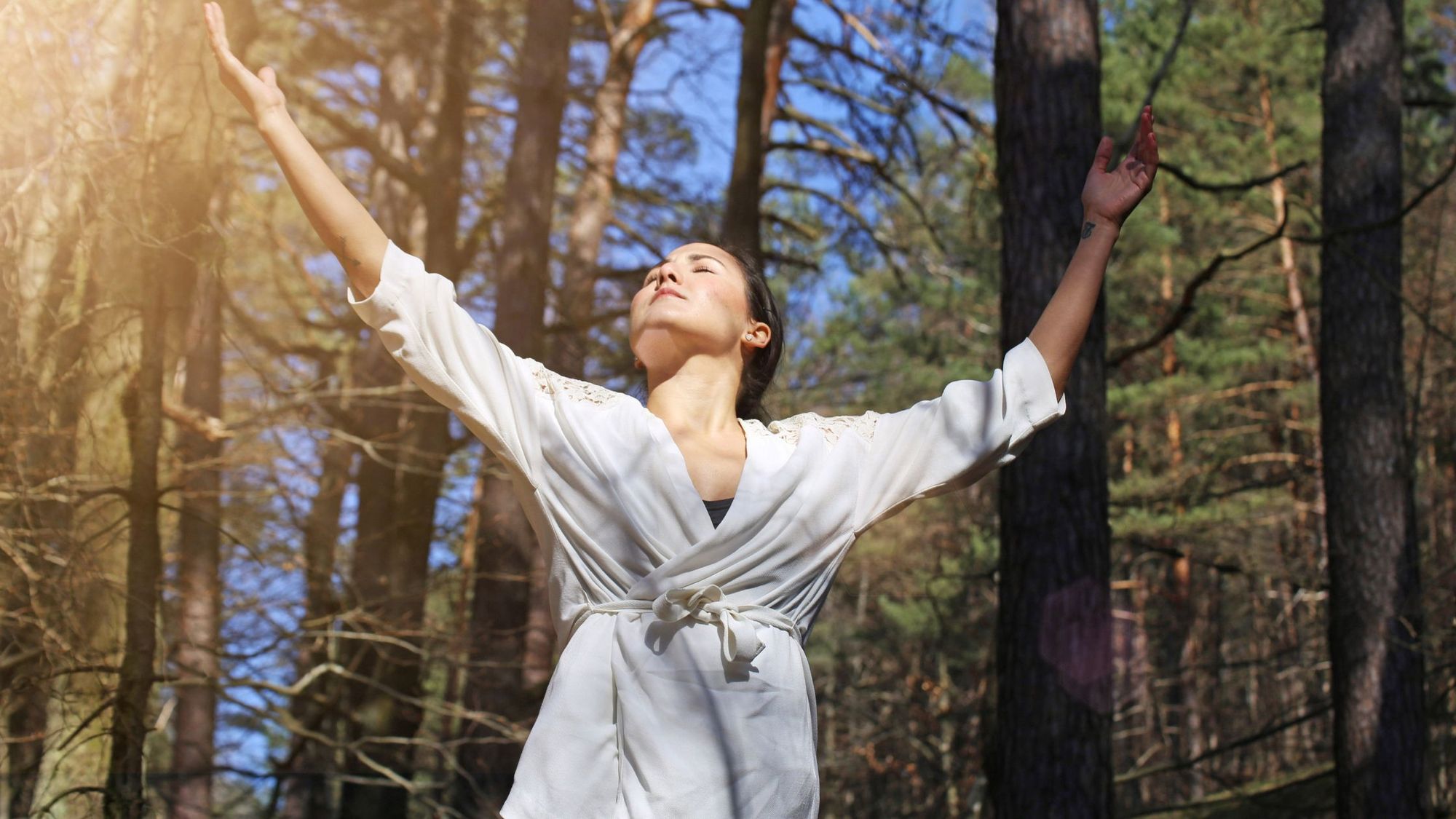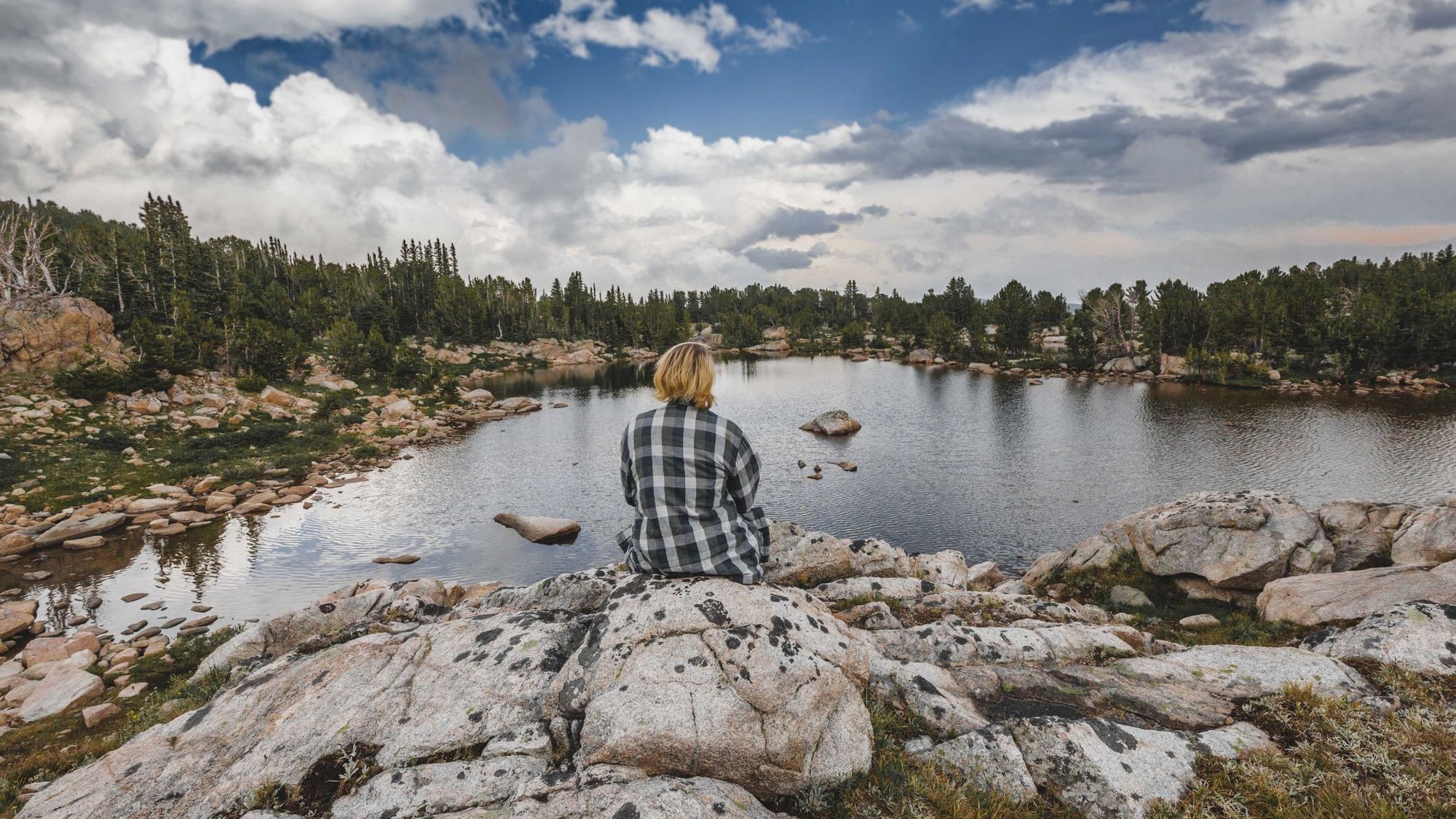
If improved physical and mental health headline your list of goals, don’t underestimate the power of nature therapy. A new study of over 16,000 people adds to the evidence that spending time in green and blue spaces, also known as nature therapy, can provide several health benefits. Green spaces are natural or planted areas such as forests, meadows, parks, and gardens, while blue spaces are bodies of water such as the ocean, rivers, ponds, and lakes.
Nature is beautiful to look at, but it’s also great for your health to spend time in nature.
Although large cities and their skyscrapers are held up as the pinnacle of progress, we are still drawn to immersing ourselves in nature, and research is now finding out just how important that is.

Nature Therapy: Spending Time in Nature as Preventive Medicine
In this new research paper, researchers asked 16,000 randomly selected people from three Finnish cities how they experienced green and blue spaces. “Green” spaces included gardens, parks, forests, moors, grasslands, and wetlands. “Blue” spaces consisted of oceans, rivers, and lakes. The survey questions covered how often responders visited these spaces, and whether they could view them from home.
Simply seeing green or blue spaces or living near a large number of them wasn’t enough to provide any health benefit. However, visiting these natural spaces three or four times each week and spending time in nature was linked to a 33% lower risk of needing medication for mental health issues, a 36% lower risk of needing blood pressure medication, and a 26% lower risk of needing asthma medication. All of these results were adjusted for differences such as income, air pollution, physical activity at work, education, and alcohol use.
However, another research paper found that being able to see blue spaces in your residential area could improve mental health. Green spaces didn’t have the same effect. This wasn’t just a coincidence related to residents needing higher incomes to live by the ocean, as researchers controlled for economic differences.

Mental Health Benefits of Spending Time in Nature
Spending more time in natural environments, also known as subjecting oneself to nature therapy, has a wide range of cognitive and emotional benefits, including a brighter mood and greater creativity.
Combatting Depression
Do you always feel uplifted after walking in the park or forest? You’re not alone. One study involving people with major depressive disorder (MDD) showed greater increases in positive emotions and relief of negative feelings among those walking in nature. These results may not have even shown the full benefits, because all volunteers were instructed to think about a negative memory while walking. This could take attention away from the beneficial sensory experience of time in nature.
Focus
The natural world is a rich sensory experience, but not so much that you become overstimulated. This allows your brain to recharge its batteries so you can focus more on tasks that call for directed attention later. As a result, a trial where volunteers had to repeat strings of numbers backward found that they performed much better after a walk in a tree-rich park. A walk in nature is a form of nature therapy. Walking around downtown didn’t have the same benefits because the sensory experience wasn’t as rich, but demands directed attention.
What about people with ADHD, where focus is usually impaired? Another trial demonstrated that children with ADHD had a milder, if any, deficit in attention span after walking in a park. In fact, the benefits they experienced were roughly equal to the peak effects of common medications. They were also more likely to describe spending time in a park as fun and relaxing than walking in their neighborhood.
Creativity and Problem Solving
Creativity is another essential cognitive skill. It allows us to create art, music, and writing; and helps us solve problems in our everyday lives. Interestingly, a study testing a four-day hike showed a 50% improvement on a problem-solving task that required creativity. Volunteers were not permitted to use any devices, making it a total digital detox, too.
How did it work? Prolonged immersion in nature and no use of electronic devices were thought to engage the default mode network of the brain. While the natural world provides a rich experience without being overstimulating, electronic devices give shallow, overstimulating experiences that turn down the default mode network.
Physical Health Benefits of Green Spaces
A wide range of health problems are at least partly driven by inflammation, poor immunity, and unhealthy habits, but spending time in green spaces and giving yourself some nature therapy can help.
Inflammatory Markers
Inflammation impacts our lives in many ways, from fatigue and period pain to autoimmune diseases and even dementia later in life. Fortunately, a study involving university students found that walking in a forest can have rapid, significant effects. Participants’ markers of fat oxidative stress were much lower after walking in a forest, and less fat oxidative stress means less damage done to your brain and blood vessels. Their levels of ET-1, which is involved in heart disease and rises if you’re exposed to air pollution, also fell. Better yet, the volunteers’ levels of cortisol also fell by more than a third, and there was a slight rise in testosterone.
These benefits were thanks to a higher concentration of negative ions and far lower levels of air pollution. Negative ions can act as antioxidants by giving up an extra electron to free radicals so they don’t damage your cells or tissues. Air pollution, on the other hand, creates oxidative damage, and less noise pollution helps you shake off stress.
Immune-Boosting Aromatherapy
Thinking of ditching cruises for camping to prevent infectious disease from ruining your vacation? Besides being less crowded, an immersive experience in the natural world can act as an immune-boosting aromatherapy treatment.
Tree species such as cedar and pine produce aromatic, oil-based substances such as pinene and limonene. They give off a subtle aroma and have broad antimicrobial properties, alongside anti-inflammatory benefits. But could they improve immunity too?
To test this theory, a Japanese study recruited volunteers for a two-night trip to the forest, a practice known as shinrinyoku (forest bathing). This is a recognized method of stress relief and relaxation in Japan, a country infamous for high-density living.
During the retreat, where volunteers walked for two hours each day in the forest, their number and activity of natural killer cells rose considerably. These cells help to clear up infections and cancer cells before they can become diagnosable tumors. Perhaps the best part of the results was how long they lasted, with heightened NK cell counts and activity persisting for at least 30 days. This means that if you live in the city, a weekend trip every month could give you a significant immunity boost.
Healthier Habits
Perhaps one of your goals is to reduce screen time to not only get more out of life, but also to prevent health issues such as myopia, or shortsightedness. Genetic variations may increase your risk of myopia, but lifestyle factors often play a role, too.
In a study of Taiwanese kids, playing outside during recess almost halved the risk of developing myopia. After one year, the rate of new diagnoses was just 8.41% at the school where playing outside was the norm, compared to 17.65% in the control school. It’s important to remember that myopia can develop at any age, and if you have kids, modeling healthy habits now can benefit their health later.
Unique Benefits of Wild Swimming
Immersive experiences in blue spaces, such as swimming or another water sport of your choice, have unique health benefits, too.
As many of you know, swimming improves lung strength through better breath control. The water’s pressure also increases the strength of each heartbeat and provides resistance training, while swimming in cold water can boost immunity and antioxidant production. Including swimming in your physical activity routine relieves pressure from your joints, too, which is particularly important if you perform high-impact exercise or are hypermobile.
Swimming in natural environments has extra benefits. Variable conditions sharpen your metabolism and mind’s ability to adapt, as temperature and currents change quickly. And if you notice better skin or clearer sinuses after swimming in a lake, river, or the sea, you may have bacteriophages to thank. Bacteriophages are viruses that only attack bacteria, so they could deal with the overgrowth that contributes to acne and sinusitis. When I used to struggle with (relatively mild) acne, swimming in the sea would help my skin to clear up, but it would worsen again in winter.
Get More Nature Therapy: How to Spend More Time in Nature This Year
If more time in green or blue spaces is one of your goals for 2023, some simple ways to get motivated are:
- Purchase a National Parks Pass. For just $80 per year, an America the Beautiful Pass covers all entrance and day use fees at over 2,000 public land locations. If you live in a country such as Australia, where we can enter areas such as national parks for free, research what’s available near you.
- Search for outdoor sports groups on social media sites such as MeetUp.
- Find a hiking buddy to plan beautiful outdoor hikes with.
- Plan for a digital detox on at least one day off from work each month. We don’t typically notice how much of our (often scarce) free time is spent on screens.
- Remember that spending time outside in nature is an essential part of self-care. Don’t feel guilty if you day out means having to meal prep or reschedule cleaning the house, if you wouldn’t feel the same way because of a physiotherapy appointment.
However you choose to spend your time in green and blue spaces, it’s both a worthwhile investment and fun way to enjoy your weekend. If you’re stuck on what types of exercise you’d like to do outdoors, a Premium CircleDNA test can help. DNA test results inform you of the sports you’re most likely to be best at, based on your genetic makeup, and areas that you may be able to improve with regular training. You’ll get 500 reports about yourself, and sports and fitness reports are just the beginning of what you’ll learn about yourself.
References:
- Cross-sectional associations of different types of nature exposure with psychotropic, antihypertensive and asthma medication, BMJ Journals, https://oem.bmj.com/content/80/2/111
- Residential exposure to visible blue space (but not green space) associated with lower psychological distress in a capital city, Health & Place, https://www.sciencedirect.com/science/article/abs/pii/S1353829216300119
- Interacting with Nature Improves Cognition and Affect for Individuals with Depression, Journal of Affective Disorders, https://www.ncbi.nlm.nih.gov/pmc/articles/PMC3393816/
- The Cognitive Benefits of Interacting With Nature, Psychological Science, https://journals.sagepub.com/doi/10.1111/j.1467-9280.2008.02225.x
- Children With Attention Deficits Concentrate Better After Walk in the Park, Journal of Attention Disorders, https://journals.sagepub.com/doi/10.1177/1087054708323000
- Creativity in the Wild: Improving Creative Reasoning through Immersion in Natural Settings, PLoS One, https://journals.plos.org/plosone/article?id=10.1371/journal.pone.0051474
- Effects of Short-Term Forest Bathing on Human Health in a Broad-Leaved Evergreen Forest in Zhejiang Province, China, Biomedical and Environmental Sciences, https://www.besjournal.com/en/article/doi/10.3967/0895-3988.2012.03.010
- Effect of forest bathing trips on human immune function, Environmental Health and Preventive Medicine, https://www.ncbi.nlm.nih.gov/pmc/articles/PMC2793341/
- Outdoor Activity during Class Recess Reduces Myopia Onset and Progression in School Children, Ophthalmology, https://www.sciencedirect.com/science/article/abs/pii/S0161642012010755 Advantages and Limitations of Bacteriophages for the Treatment of Bacterial Infections, Frontiers in Pharmacology, https://www.frontiersin.org/articles/10.3389/fphar.2019.00513/full






